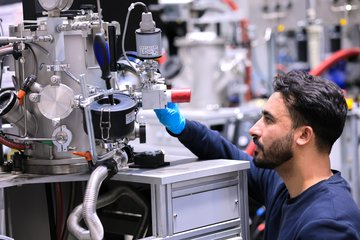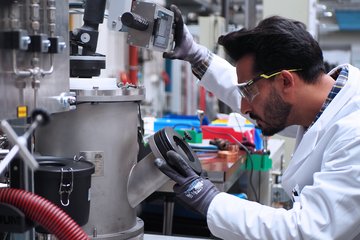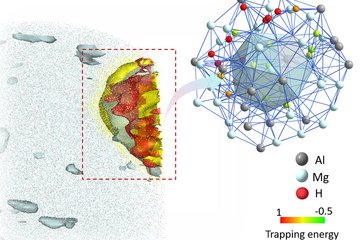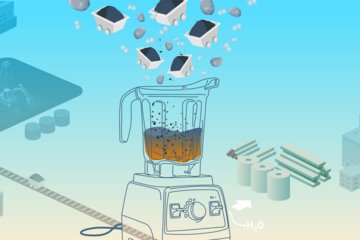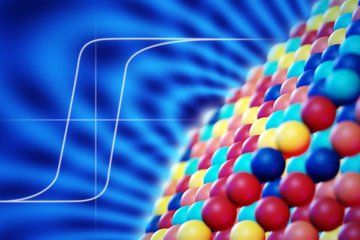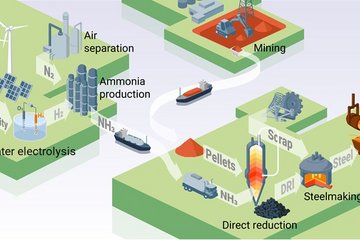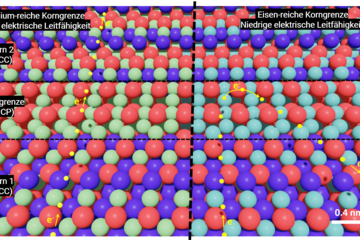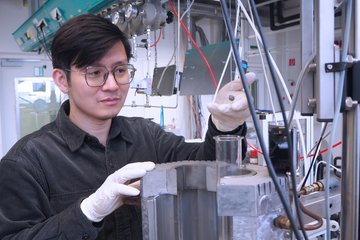Alle Typen
241.
Zeitschriftenartikel
Polarization effects due to thickness fluctuations in nonpolar InGaN/GaN quantum wells. Applied Physics Letters 103 (7), S. 073115-1 - 073115-4 (2013)
242.
Zeitschriftenartikel
Density functional theory in materials science. Wiley Interdisciplinary Reviews-Computational Molecular Science 3 (5), S. 438 - 448 (2013)
243.
Zeitschriftenartikel
Theory-Guided Materials Design of Multi-Phase Ti–Nb Alloys with Bone-Matching Elastic Properties. Materials 5 (10), S. 1853 - 1872 (2012)
244.
Zeitschriftenartikel
The dangling-bond defect in amorphous silicon: Statistical random versus kinetically driven defect geometries. Journal of Non-Crystalline Solids 358 (17), S. 2063 - 2066 (2012)
245.
Zeitschriftenartikel
Reconstructions and electronic structure of (11-22) and (11-2-2) semipolar AlN surfaces. Journal of Applied Physics 112, S. 033510-1 - 033510-6 (2012)
246.
Zeitschriftenartikel
Ab Initio-Based Prediction of Phase Diagrams: Application to Magnetic Shape Memory Alloys. Advanced Engineering Materials 14 (8), S. 547 - 561 (2012)
247.
Zeitschriftenartikel
A flexible, plane-wave based multiband k . p model. Optical and Quantum Electronics 44 (3-5), S. 183 - 188 (2012)
248.
Zeitschriftenartikel
Ab initio EPR parameters for dangling-bond defect complexes in silicon: Effect of Jahn-Teller distortion. Physical Review B 85 (19), 195202, S. 1 - 8 (2012)
249.
Zeitschriftenartikel
Solution enthalpy of hydrogen in fourth row elements: Systematic trends derived from first principles. Physical Review B 85 (15), S. 155144-1 - 155144-10 (2012)
250.
Zeitschriftenartikel
Vacancy formation energies in fcc metals: Influence of exchange-correlation functionals and correction schemes. Physical Review B 85 (14), 144118 (2012)
251.
Zeitschriftenartikel
The relation between ductility and stacking fault energies in Mg and Mg–Y alloys. Acta Materialia 60 (6-7), S. 3011 - 3021 (2012)
252.
Zeitschriftenartikel
Combined ab initio, experimental, and CALPHAD approach for an improved thermodynamic evaluation of the Mg–Si system. Calphad: Computer Coupling of Phase Diagrams and Thermochemistry 37, S. 77 - 86 (2012)
253.
Zeitschriftenartikel
Strong dipole coupling in nonpolar nitride quantum dots due to Coulomb effects. Applied Physics Letters 100, S. 092103-1 - 092103-4 (2012)
254.
Zeitschriftenartikel
Atomic forces at finite magnetic temperatures: Phonons in paramagnetic iron. Physical Review B 85, S. 125104-1 - 125104-5 (2012)
255.
Zeitschriftenartikel
Trends in the elastic response of binary early transition metal nitrides. Physical Review B 85, S. 064101-1 - 064101-9 (2012)
256.
Zeitschriftenartikel
First-principles study of the thermodynamic and elastic properties of eutectic Fe–Ti alloy. Acta Materialia 60 (4), S. 1594 - 1602 (2012)
257.
Zeitschriftenartikel
Advancing density functional theory to finite temperatures: Methods and applications in steel design. Journal of Physics: Condensed Matter 24, 053202 (2012)
258.
Zeitschriftenartikel
Ab initio study of pressure stabilized NiTi allotropes: Pressure-induced transformations and hysteresis loops. Physical Review B 84, S. 224119-1 - 224119-8 (2011)
259.
Zeitschriftenartikel
Temperature-driven phase transitions from first principles including all relevant excitations: The fcc-to-bcc transition in Ca. Physical Review B 84 (21), S. 214107-1 - 214107-20 (2011)
260.
Zeitschriftenartikel
Combined multifrequency EPR and DFT study of dangling bonds in a-Si:H. Physical Review B 84, 245203, S. 1 - 10 (2011)
